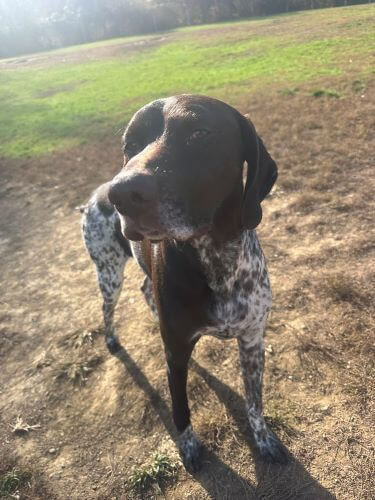Can You Teach an Old Dog New Tricks? Training Tips for Senior Dogs
Although owning a puppy gets a lot of good press, an older dog can offer positive benefits that you might not expect. Whether you have recently adopted a senior dog, or think your old friend needs a little bit more training, there are several keys to training an older dog that you should consider.
The bottom line is that you will need a whole lot of patience, but with time and compassion you will be able to build new habits and a stronger relationship with your older dog by trying to teach them new tricks.
How to Train an Older Dog?
The key to training an older dog is understanding. Not only do you have to understand the specific needs and character traits of your particular dog, but you also have to know exactly what training you are trying to accomplish. Senior dogs are considered any dog over the age of seven, with smaller breeds becoming senior dogs later, and large breeds earlier. If you have a senior dog, make sure you know what you are trying to teach your dog as you start training, and anticipate any problems you may encounter.
The “how” of training an older dog will always come down to your attitude. You need to be ready, willing, and compassionate, and believe that your dog is able to be trained. Sometimes owners think senior dogs are more difficult to train or that they might have bad behavior from a previous owner. If you have that mindset, the whole training process will be more difficult.
ASPCA Adoption Center Senior Director Jorge Ortega says, “While it’s true that adult and senior dogs typically have established personalities, older dogs are perfectly capable of learning, and the more consistent you are about working regularly with your dog, the easier it is for them to learn, no matter how old they are.”
Why Should I Train My Dog?
One reason you might want to train an older dog, especially one you adopted, is if the dog has picked up bad habits or behaviors before it came to you. If a dog doesn’t know where to go to the bathroom, or likes to bark at every passerby, these are habits you will try to break with loving training. Your dog should know basic commands, and this will make for a more peaceful situation both in and out of your home.
Another reason you will want to train your dog is because you care about it. According to American Kennel Club’s breeder and trainer Penny Leigh, CPDT-KA, if you have an older dog you want it to be physically and mentally active long into its golden years. She said, “Dogs that still feel useful and that they have a ‘job’ tend to keep a youthful outlook, much like humans who continue to stay engaged in activities after they retire.” Another positive of a training program is that working with your dog will strengthen the bond that you have together.
What Types of Training Can I Do With an Older Dog?
- Crate training — To train an older dog for a crate, you are basically teaching the dog to be happy and content in the crate. Use top-notch treats and reinforce the behavior a lot. Never force a dog into the crate. Once they are used to the delicious treats you offer, they will associate the crate with a happy place.
- Potty training — Make sure to teach your dog where the bathroom is by using positive reinforcement and a lot of practice. If they continue to go in the house, consider there may be a medical issue and take your dog to the veterinarian.
- Leash training — Ensure that you have a comfortable, padded collar for your dog, and a lightweight leash. The training will be easier if the experience is easier for the dog.
- Other types of training — Experts recommend rally training and trick training for older dogs, and say that scent work is also a great idea. This gives dogs a sense of purpose and adventure, but they do not have long hikes or experience difficult work to accomplish it.
What Are the Pitfalls of Training Older Dogs?
Older dogs are just like older people. After years of living, they start to slow down and lose their energy. Because many people are more used to the idea of training younger dogs, there are a few special situations to watch out for with older dogs.
Sore Limbs
It stands to reason that an older dog might have sore limbs and that you should proceed with caution in training them. To this end, refrain from vigorous training activities such as jumping through hoops or getting up on their back legs.
Slow Metabolism
An older dog will have a slower metabolism, so use caution and common sense when passing out treats during reward-based training. If a dog puts on weight because of excess treats, this can affect every aspect of their life.
Low Energy
If an older dog has low energy, this means that they will not have the stamina to perform a trick over and over, especially without a rest in between. Additionally, older dogs generally have a decreased appetite, so they will not be as interested in treats as an enticement to train. Make sure to train before meals, so the dogs will be hungry and have the best chance to respond to commands in exchange for treats.
Specific Health Needs
Consider the specific needs of your dog when you plan your training. If your dog has a bad hip, don’t overexert their hips in training. If your dog gets easily winded, don’t keep working after they are fatigued. Use your best judgment so the dog will reap the benefits of training.
Need Quiet
Sometimes, older dogs begin to be afraid of loud noises. Often this is because they startle at a loud noise, and can hurt themselves from the sudden movement, and then they begin to associate the loud noise with pain. Also, older dogs can get off track if there are a lot of different noises where you are doing the training. Aim for quiet training time to alleviate these problems.
What Do I Need for Training?
When it comes to training older dogs, the tools of the trade are very easy to come by. Assuring that you have the following at the ready will make the whole process easier.
- Patience: Training an older dog is meant to build your relationship, and without patience, you will be doing the opposite. Take it slow and realize your dog is doing the best they can.
- Consistency: Make sure that you train in the same way each time and at the same time of day for optimal results.
- Praise: Dogs respond best to praise, so use praise rather than fear in your training sessions.
- Special toys: You can motivate your dog with special toys to help them with their training.
- Treats: Choose treats that are easy to chew and ensure that you count them in their calorie count of the day.
- A leash: If you are doing outdoor training, find a sturdy but gentle leash for your dog’s safety.
- Short sessions: Plan on training a short amount of time multiple times a day, rather than one long session. (For instance, 30 seconds-3 minutes several times a day rather than one large session of 15 minutes.)
- Knowledge of your dog: If you know and understand your dog, you will not overwork it. Your dog wants to please you but could get hurt with sessions that are too long. Be realistic about what your dog can handle.
We’d Love to Meet (And Train!) Your Senior Dog
If you are looking for professional help in training your older dog, there are six locations in the Harrisburg area that you can reach out to. Greenlin Pet Resorts can help you with all of your questions. Each member of our staff is highly trained, and we will work tirelessly with you to meet your unique goals for training your adult dog. With patience and compassion, you can meet your training goals and keep your dog safe and happy for many years to come.
Schedule your free evaluation, and get answers to your questions when you reach out to one of our six locations in the Harrisburg area today!

